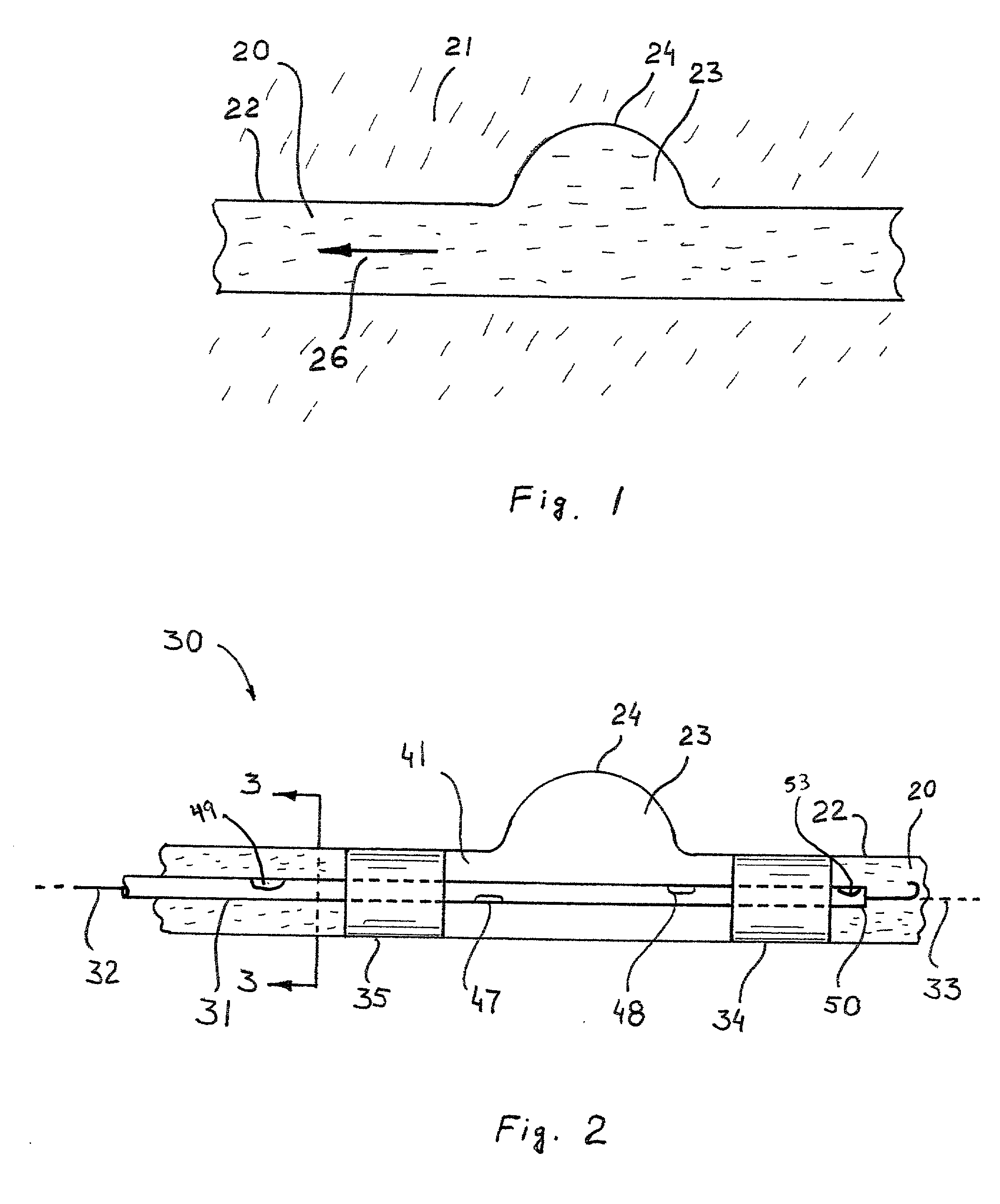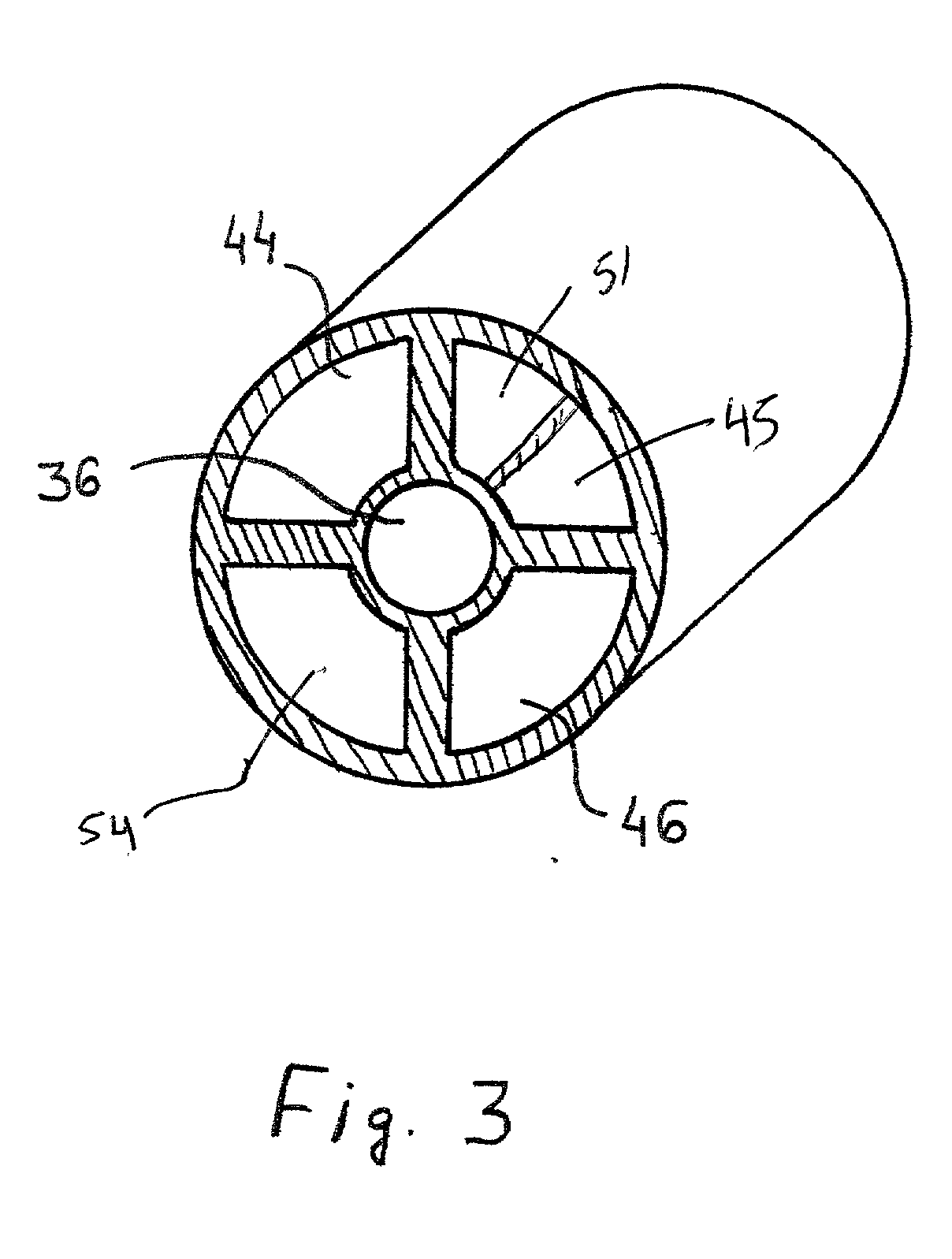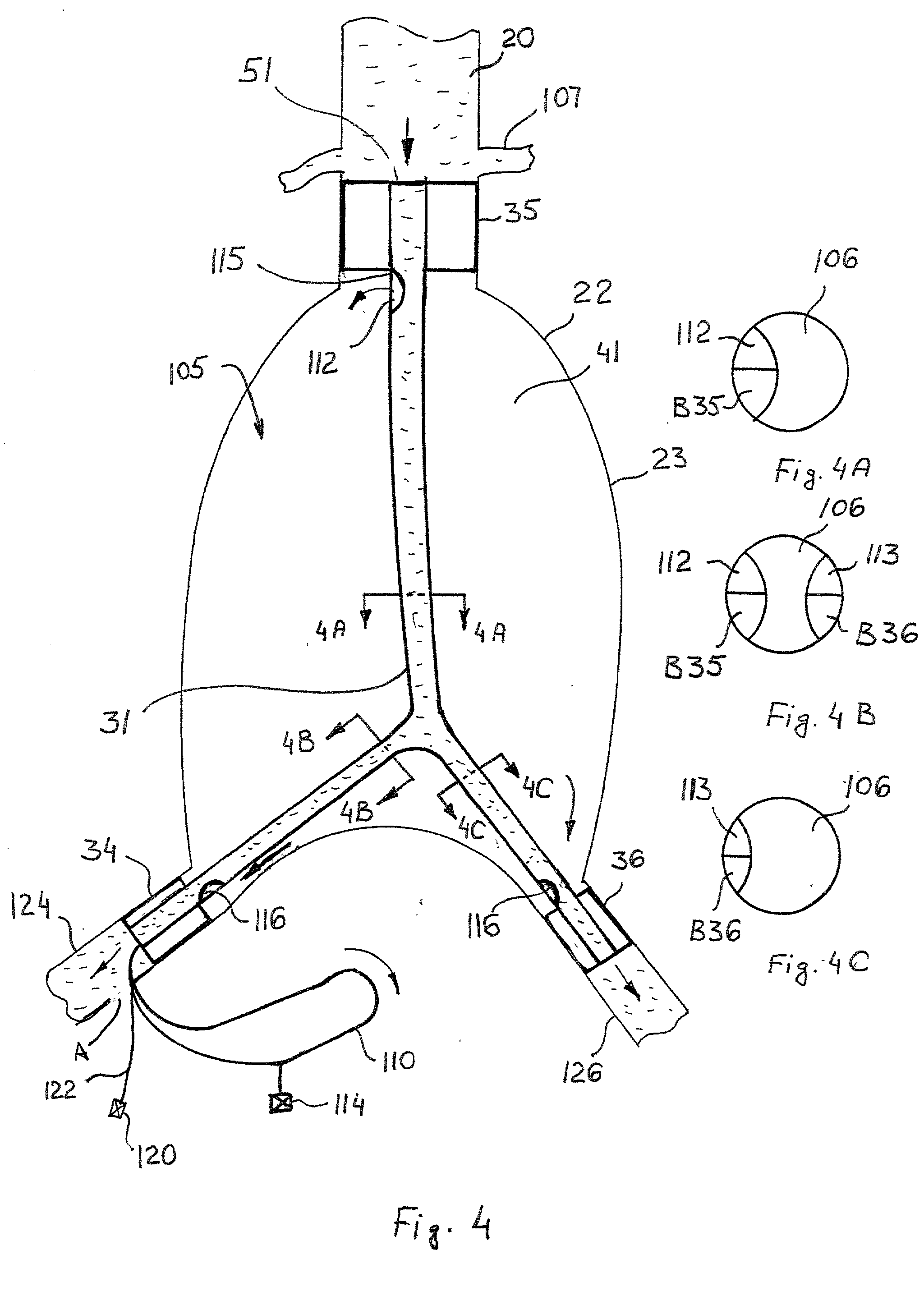Method and apparatus for treating aneurysms
- Summary
- Abstract
- Description
- Claims
- Application Information
AI Technical Summary
Benefits of technology
Problems solved by technology
Method used
Image
Examples
Embodiment Construction
[0035] The words "proximal" and "distal" as used below have the following meaning, the proximal end of the catheter device is the end inserted into the patient first via a percutaneous insertion. For example, in FIG. 2, the most proximal portion of the catheter device is tip 50. The invention will now be described with respect to the figures. FIG. 1, in simplified form, illustrates a single-passage, tubular vessel 20 through tissue 21, such as peri-arterial tissue, defined by a vessel wall 22. Although FIG. 1, and the other figures, depict a vessel wall as comprising a single homogeneous layer, it will be recognized that an actual vessel wall has multiple layers. However, this invention can be understood by referring to the simplified, homogenous representation in the figures. In addition, and as later to be discussed, vessel 20 maybe a bifurcated vessel such as the abdominal aortic.
[0036] FIG. 1 illustrates an aneurysm 23 in vessel wall 22 that is an abnormal dilation of blood vess...
PUM
 Login to View More
Login to View More Abstract
Description
Claims
Application Information
 Login to View More
Login to View More - R&D
- Intellectual Property
- Life Sciences
- Materials
- Tech Scout
- Unparalleled Data Quality
- Higher Quality Content
- 60% Fewer Hallucinations
Browse by: Latest US Patents, China's latest patents, Technical Efficacy Thesaurus, Application Domain, Technology Topic, Popular Technical Reports.
© 2025 PatSnap. All rights reserved.Legal|Privacy policy|Modern Slavery Act Transparency Statement|Sitemap|About US| Contact US: help@patsnap.com



